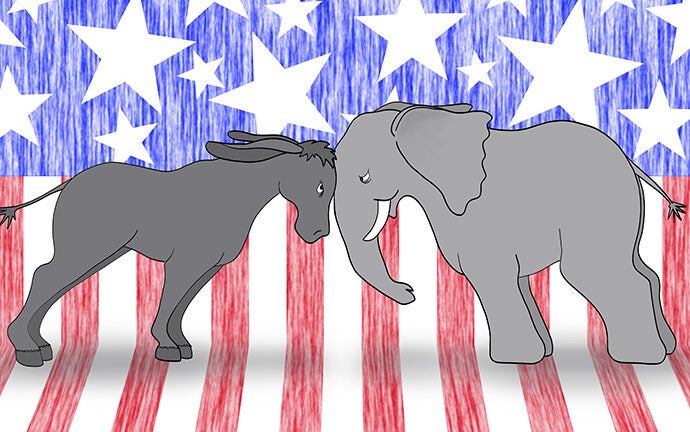
USC, Los Angeles Times launch daily election poll
Two USC centers and the Los Angeles Times are launching a daily nationwide poll featuring updates over time that will reveal shifts in Americans’ opinions on the presidential candidates.
The new USC Dornsife/L.A. Times Presidential Election Daybreak Poll is a probability survey that will provide a best estimate of how America plans to vote in the November election. Results are based on repeated participation by a large panel of Americans representing a random sample of diverse households nationwide.
Only a few such daily probability polls exist in the country. Daybreak is part of the ongoing Understanding America Study at the USC Dornsife Center for Economic and Social Research (CESR). It is conducted in partnership with USC Dornsife’s Jesse M. Unruh Institute of Politics and with the Times.
“Because it’s a daily poll, it will pick up almost instantaneously the effects of any event relating to the race — whether it’s a candidate’s announcement of a new running mate, a controversial incident or a policy proposal,” said Arie Kapteyn, director of CESR, which oversees the Understanding America Study.
More than 3,200 participants in the Understanding America Study are on the election panel. Of those, 450 are invited daily to participate in the Daybreak Poll to ensure a balanced sample. Each day at midnight, researchers update the results, which are based on a week’s worth of responses.
“And since the same people respond to the poll again and again, we know that the shifts we see in the data are the result of them changing their opinions,” Kapteyn said.
What the poll shows so far
For the first week of the poll, Republican candidate Donald Trump and Democratic candidate Hillary Clinton are in a statistical tie. Trump has 43 percent and Clinton 40 percent — falling within the poll’s confidence interval of plus or minus 3 percentage points.
The poll affirms that the campaign is broadly divided by race, gender, age and education. Among men, Trump leads Clinton 47 percent to 36 percent. Among women, Clinton leads Trump 41 percent to 34 percent, a result just inside the poll’s margin of error.
Eligible voters who have not graduated from college tend to support Trump: 53 percent versus 24 percent for Clinton. However, Clinton draws 77 percent support from African-Americans versus Trump’s 3 percent. She also draws 51 percent from Latinos, versus 30 percent for Trump.
Among white college graduates, Clinton is at a slight advantage: 42 percent to Trump’s 40 percent.
Poll respondents lean in Trump’s favor but think he’s unlikely to win. Fifty-three percent believe Clinton will prevail, compared with 41 percent for Trump.
“It looks as though the news surrounding Hillary Clinton’s email controversy has had a pronounced impact on her level of support,” said Dan Schnur, director of the Unruh Institute of Politics. “Donald Trump’s poll numbers have been largely unchanged over the last several weeks, but our poll shows that Clinton’s have taken a noticeable hit.”
How the poll works
About 450 eligible voters in the Understanding America Study election panel are invited every day to answer three questions online: What is the percent chance that: (1) you will vote in the presidential election? (2) you will vote for Clinton, Trump or someone else? and (3) Clinton, Trump or someone else will win? In addition, to learn more about what lies behind their likely vote, respondents each week are asked one or two extra questions about their preferences and values.
As the responses come in, CESR updates the charts nightly with an average of the prior week’s responses.
“We’re very excited to have this national nightly Daybreak tracking poll to complement our ongoing USC Dornsife/L.A. Times California poll,” said Schnur, whose institute oversees the largest statewide poll of California voters. “The two will combine to give us tremendous insight into the thinking of voters here and across the country.”
To identify who is likely to vote, the Daybreak Poll uses a 1-100 scale and asks respondents to report their likelihood of voting and which candidate they prefer. Kapteyn said that in theory the use of longitudinal data should lead to more reliable results.
Four years ago, the team responsible for the Daybreak Poll had developed the RAND Continuous Presidential Election Poll based on the same methodology. The margin of error is plus or minus 3 percentage points but may vary for subgroups.
The Daybreak Poll results are publicly available on three sites: elections.usc.edu at the Unruh Institute site and the L.A. Times politics page.